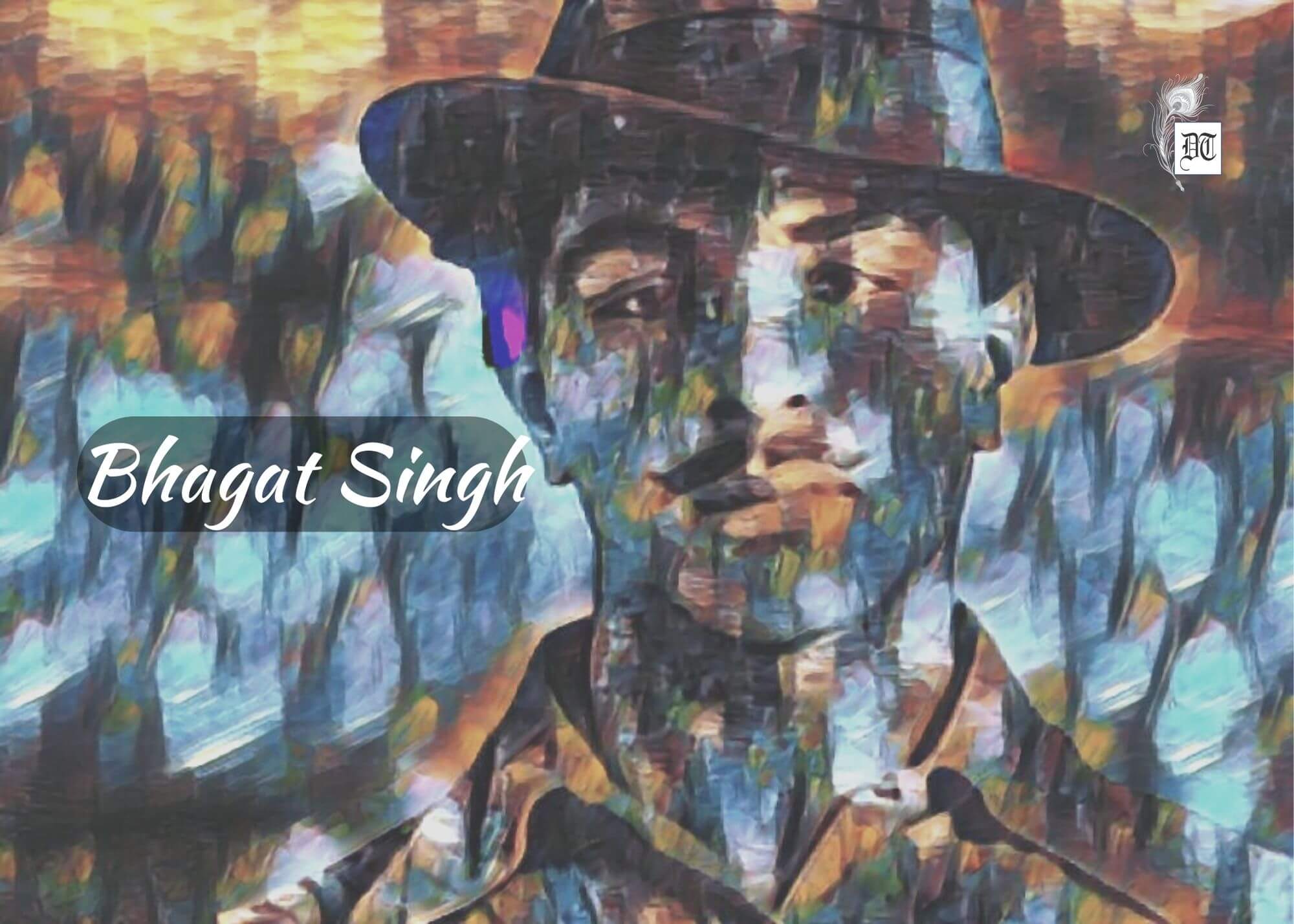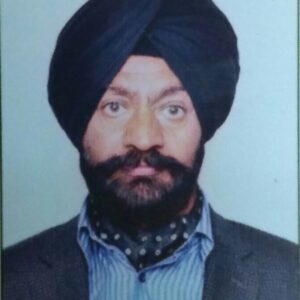Shaheed Bhagat Singh was a key player in India’s independence movement. He became an idol of Indian revolutionaries, says Dr Baljeet, in a tribute – exclusively for Different Truths.
Shaheed Bhagat Singh was an icon of revolutionaries in India’s struggle for independence. He was born on September 27, 1907, in Banga, district of Lyallpur (West Punjab, Pakistan). He was from a family of freedom fighters. His father, Kishan Singh, was in jail at the time of his birth. And his uncle Ajit Singh too, while agitating against Abadkari Bill. He thus inherited patriotic traits from his ancestors. The story is a history of his patriotic zeal and sacrifice for the country. He had encountered many Gadhar Party revolutionaries (1914-1915). Their ideas and activities left an indelible impression on the young mind.
While studying at National College, Lahore, his parents encouraged him to get married. But he politely refused. His answer was: “My country is calling me. It needs me. Our country is in shackles. There is poverty and hunger all around. Today Indians are not considered even human beings. We are to get it free. Rebuild it and construct palaces in place of huts. Provide bread and clothes to the poverty-stricken. These great works are yet to be done. When done, I will get married.” (From an article in ‘Inquilabi Sardar’ by Sardar Gulab Singh, former Parliamentary Secretary). Bhagat Singh thus carved out and trod his way.
In 1924, Bhagat Singh left his home and reached Kanpur, Uttar Pradesh.
In 1924, Bhagat Singh left his home and reached Kanpur, Uttar Pradesh. Here he came into contact with many prominent revolutionaries of the region, like Chandra Shekhar Azad, B. K. Dutt, Jogesh Chandra Chatterjee, Vijay Kumar Sinha etc. Then he became an active member of their organisation, the Hindustan Republican Association. In its meeting at Feroze Shah Kotla, near Delhi, this Association was renamed Hindustan Socialist Republican Association. Bhagat Singh was appointed its secretary. Young men from Uttar Pradesh, Punjab, Rajasthan, and Bengal enthusiastically joined its ranks.
Consequently, the number of its members increased considerably. Many Bravehearts from Naujawan Bharat Sabha also became its members. This Sabha was the brainchild of Bhagat Singh, founded in Lahore in 1926. In a short time, it became a hotbed of revolutionaries. Efforts were made to make it financially strong as well. The main objective of the Association was to throw off colonial rule and establish the Socialist Republic in India through armed rebellion. Its armed wing was to boycott Simon Commission and manufacture bombs at various places. Simon Commission was constituted to investigate the problems of Indians. But pathetically, none of its members was Indian. All were British. On October 30, 1928, when this commission reached Lahore, many people gathered to protest under the leadership of Lala Lajpat Rai.
Bhagat Singh and his colleagues swore to avenge Lala ji’s death. They planned to kill Scott.
Bhagat Singh and his companions were present on the frontline. They raised slogans: “Simon, go back. Inqilab Zindabad”. At this, the British police officer Scott ordered a lathi charge on the crowd to disperse it. Lala Lajpat Rai was severely injured in the head and died. Bhagat Singh and his colleagues swore to avenge Lala ji’s death. They planned to kill Scott. But unfortunately, they shot dead JP Saunders, Deputy Superintendent of Police, under mistaken identity instead of Scott. They were, however, able to escape from Lahore and went to Calcutta and then to Delhi.
On April 8, 1929, Bhagat Singh and BK Dutt lobbed low-intensity bombs into the Central Assembly Hall, New Delhi. Public Safety Bill was being debated there then. No one was seriously injured on account of the explosion. They shouted ‘Inqilab Zindabad’ slogans and threw pamphlets in the hall. They could easily escape by taking advantage of the dense fog the explosion had caused. They surrendered before the police exhibiting exemplary bravery. When asked by the trial court judge as to why they did so? Their straightforward answer was: “The bombs are needed to wake the British from slumber. We, on behalf of those people who have no words to express their grief and mental agony, have thrown bombs in the Assembly to protest. Our motive was only to make the deaf ear hear and warn the insensitive on time.” The trial ended on 10-6-1929. The punishment awarded was life imprisonment. In May 1930, the famous Lahore Conspiracy Case or Saunders murder case started in a Special Tribunal. Then they were shifted from Mianwali to Central Jail, Lahore. There they went on hunger strikes demanding better facilities for political prisoners. Their long pending demands were finally met after a hard struggle. The Special Tribunal hearing Bhagat Singh, Rajguru and Sukhdev’s trial gave its verdict on October 7, 1930.
The trio was awarded capital punishment. Bhagat Singh refused to file any mercy petition to commute their sentence.
The trio was awarded capital punishment. Bhagat Singh refused to file any mercy petition to commute their sentence. When taken to the gallows on March 23, 1931, the three young men again raised slogans of ‘Inqilab Zindabad, Down with British Imperialism’. After that, they kissed the gallows without any grudge. The authorities hurriedly performed their last rites on the bank of River Sutlej near Ferozepur. This was done to avert any untoward incident, sensing the people’s anger. Later, the Indian Government raised National Martyrs Memorial at Hussaini Wala, near Ferozepur, to commemorate their sacrifice.
Bhagat Singh’s extraordinary sacrifice and lofty ideals shook the brute British rule to its foundations. Inspired by his unflinching courage and exceptional bravery, hundreds and thousands of young and old were ready to die for the nation. He ignited the flame of liberty and infused a new spirit in the people’s minds to fight for their rights. He raised the slogan of Inqilab Zindabad (long live the Revolution) at a time when doing such actions was an open invitation to death. When the trial court asked him what did he mean by Inqilab? He clarified: “Inqilab does not necessarily mean shedding blood in it, nor does it have any place for personal enmity. It is not a battle of bombs and pistols. By Inqilab, we mean to change the present system, which is based on inequality and injustice.”
His was, therefore, a novel method of fighting the oppressive British rule.
His was, therefore, a novel method of fighting the oppressive British rule. This was in contradiction to Mahatma Gandhi’s non-violence. However, earlier, Bhagat Singh had participated in the Non-Cooperation Movement of Mahatma Gandhi. But soon, he was fed up with this policy of non-violence. Because he considered it useless to achieve the desired results, he resorted to armed rebellion to free his country from the British yoke. Later, Mahatma Gandhi eulogised his bravery but did not support his force method. Neither did Gandhi make any substantial effort to get him released from jail, though Mahatma was in a capacity to do that.
On March 23 of every year, political leaders of all hues and colours gather at the Martyrs Memorial, Ferozepur, to pay their homage to the great martyrs. But does anyone try to fulfil his dreams for which Bhagat Singh stood, fought, and sacrificed his precious life? Their only purpose seems to be to garner votes and stick to the power by appropriating his name and legacy. Today, all Punjab government offices are adorned with his photograph. Even apparel designers have designed T-Shirts portraying Bhagat Singh’s photograph on both the front and backsides. This marketing strategy is to sell the product they think would fetch them maximum profit. Are we selling the great martyr in the capitalist-driven society? Only soul searching can answer this pricking question.
Picture design by Aumita Roy






 By
By

 By
By
 By
By
A comprehensive reminder of what we owe Bhagat Singh.
Prof. Virk, you have concluded your comprehensive write up on a very pertinent note: Has Shaheed Bhagat Singh become a commodity for sale on a consumer market? We surely have to do some soul searching. Another question that we have to ask is: Does invoking his memory and stories oi his sacrifice of any value if we no longer subscribe to his ideology? Appropriation of this icon for political one-upmanship by self-serving politicos is actually an insult to the memory of Sardar Bhagat Singh. Beware of such politicos! They are no less than weasels who will use the martyr’s name to evade all responsibility.
Thanks for this beautiful article.